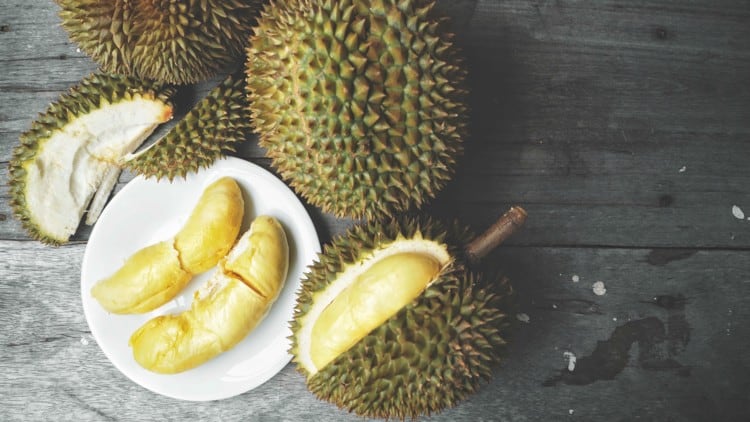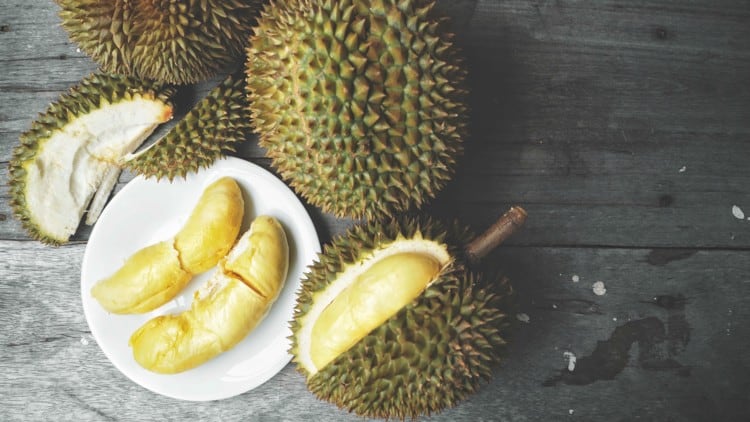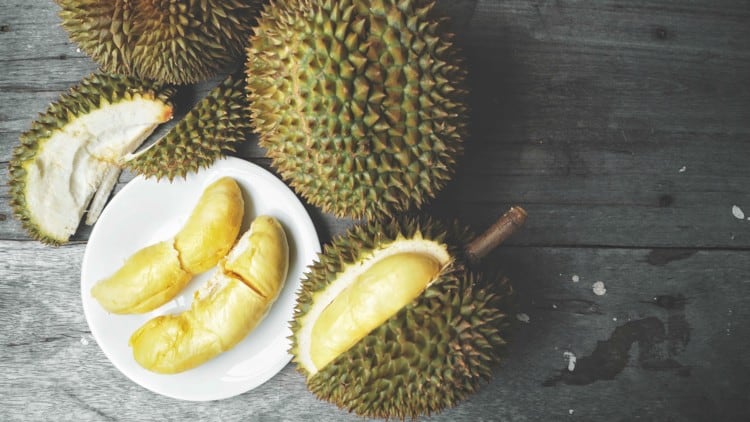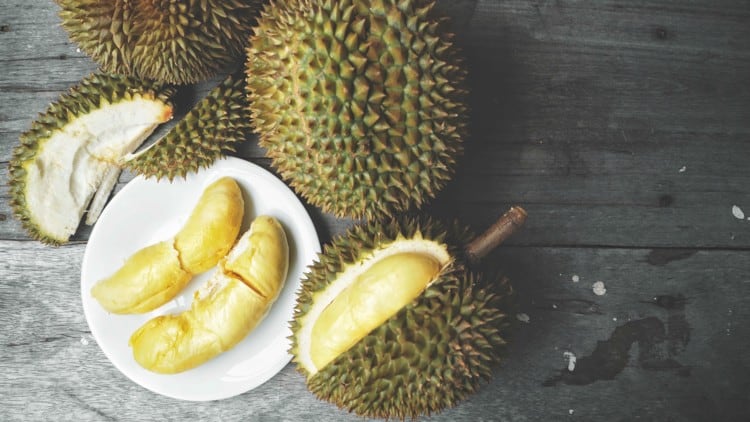The research was conducted by the International Islamic University Malaysia (IIUM). Focus was placed on the development of a biocomposite (a material made of more than one type of composite, with at least one being naturally derived) that would be a suitable replacement for current food packaging.
The team developed a biocomposite made from polylactic acid (PLA), durian skin fibre and epoxidised palm oil. Although research is still ongoing, already it has been found that the addition of cinnamon essential oil (CEO) and treatment with supercritical carbon dioxide (SCCO2) on the material can greatly help to improve its properties for food packaging.
“Durian skin fibre (DSF) has excellent features as a reinforcement or filler (to improve physical and mechanical properties) in PLA biopolymers,” said the researchers.
“Only about 55% to 65% of a durian by weight is flesh, which is consumed – the remaining 45% to 55% is generally considered to be waste, including the seed and skin, which was used in this study. Using the skin to produce DSF can help with reducing environmental pollution.”
The addition of CEO to the durian-based biocomposite was found to play an especially important role in terms of conveying antimicrobial properties, as when biocomposites with and without CEO treatment were treated with CEO, the results were vastly different in the presence of the microbes Staphylococcus aureus and Escherichia coli.
“The control samples without CEO negatively inhibit any of the tested bacteria, which resulted in no inhibition zones (0mm) bring formed around the bacteria, [whereas the CEO-treated samples] formed clear inhibition zones and showed that bacterial growth was prevented,” said the researchers.
The inhibitory zone against E.coli was slightly larger at around 15.1mm as compared to that against S.aureus at around 12.5mm, indicating that CEO is slightly more effective against gram-positive bacteria than gram-negative ones.
“[Nevertheless], the active compound cinnamaldehyde expressed high antimicrobial activity against both [types of bacteria]. [It is believed that phenolic compounds in the CEO also] disintegrate the external cell membrane and mitochondria of bacteria, allowing them to become permeable, and leading to leakage of the cell wall,” they explained.
Environmentally friendly
Another key draw point about the durian-based material is its high rate of biodegradability, which has been found to take place in months instead of the years required to break down conventional plastic packaging.
Apart from the naturally biodegradable nature of the durian fibres, it was found that SCCO2 treatment could also help to speed up the process.
The biocomposites were buried in soil to mimic natural conditions, and evaluated for degradation based on each sample’s weight loss after 80 days.
“The biocomposite treated with SCCO2 at 40°C and 200 bar pressure showed the highest degradability with 96.58% of weight loss. When the pressure was reduced to 100 bar, this amount was reduced to 95.17%, and biocomposites that were completely untreated showed 93.23% weight loss,” said the authors.
The presence of durian fibre was also hypothesised to speed up the degradation process due to ‘poor adhesion between matrix and reinforcement [material]’ – the reinforcement material being durian fibres.
“Natural fibre is also more compatible with the surrounding environment, which leads to the degradation process. The high cellulose content in the fibre causes high water absorption, which has a synergistic effect on residual loss and improves the degradation rate of composites,” they said.
This was shown by also exposing materials not comprising durian fibres (only PLA) to the soil burial test, where untreated PLA showed just 65.37% weight loss, and even treated PLA did not lose more than 68.56% of its weight under maximum pressure conditions.
“The supercritical fluid treatment of [this] biocomposite could be an alternative for active packaging industries to ensure that the [packaging] meets consumer requirements [in addition to] being an eco-friendly product,” the authors added.
In addition to food packaging development, the team also sees potential for this biocomposite as a 3D printing material.
“3-D printing uses material layer-by-layer to build objects [and] currently, a wide range of materials are used,” said IIUM.
“The biomass is suitable for making various products [via 3D printing], and future work [on this] will focus on ways to reduce the cost of polymer.”
Study: The Effects Of Supercritical Carbon Dioxide On The Degradation And Antimicrobial Properties Of PLA Biocomposite
Source: IIUM Engineering Journal
Authors: Anuar, H. et. al.





